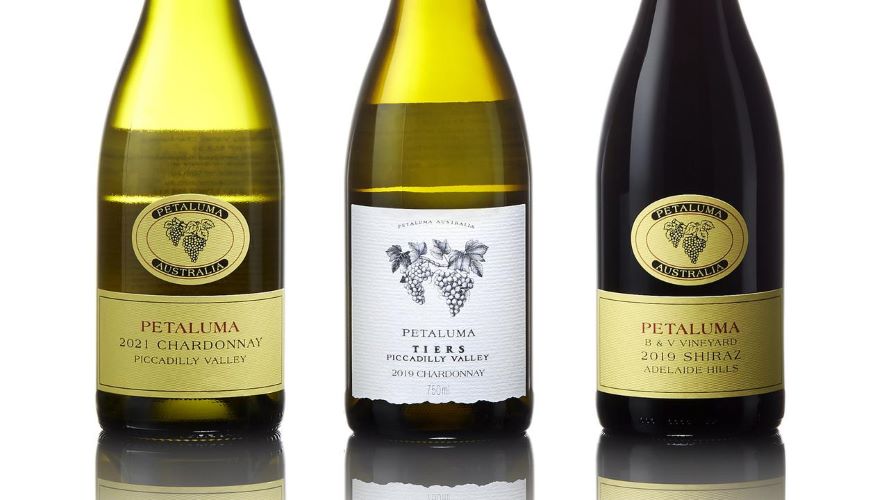When Brian and Ann Croser established Petaluma in 1976, the wine world was a very different place to that of today. Bringing varieties and clones into South Australia was strictly controlled by the forerunner of today’s Vinehealth Australia. In 1976 only 445 tonnes of chardonnay were crushed across the whole of Australia, and another ten years saw the crush creep up to 17,422 tonnes (today it is 385,100 tonnes). Petaluma’s flagship wines bear the (faintly muted) yellow label on the top end releases: Hanlin Hill Clare Valley Riesling, Piccadilly Valley Chardonnay, B&V Vineyard Adelaide Hills Shiraz, Coonawarra Merlot, and Evans Vineyard Coonawarra.
This wasn’t an overnight process. It was predicated on the identification of blocks within regions or subregions in which there was a compelling synergy between the variety and site. As its green footprint grew out of increased yields, Petaluma’s acquisition of mature vineyards and brands added to the vintage crush of varieties new or old. As the years went by, Petaluma’s reputation increased so much so that when Lion Nathan purchased Petaluma in 2001, it paid $200m.
Now owned by Accolade, the approach is similar to that used in the ‘old’ Petaluma. Thus the vines are pruned and picked by hand, and crop thinning is practised throughout the growing season wherever it is required. One mantra is that all the grapes used in the Yellow Label series are estate grown. Once you step outside the Yellow Label into the White Label range, it becomes a different ball game. Much the same regions and varieties provide the total volume of 130,000 dozen.
Croser is a justifiably proud man, and has a special place in the Australian wine canvas. Incoming (ex Yalumba) senior winemaker Teresa Heuzendoeder recognised this when she said ‘We have to respect, admire and feel gratitude for wineries such as Petaluma’s’ varietal/terroir matching, adding ‘When you have distinguished sites, they are the sites that will deliver time and time again because you have that great synergy of region and variety.’
2021 Petaluma Piccadilly Valley Chardonnay
The green-gold colour heralds a fruit blossom-filled bouquet that verges on outright perfume. The palate sleek and long, fruit-sweet pink grapefruit and Granny Smith apple have been highlighted by partial mlf.
96 points, drink to 2030, 13.5% alc, Screwcap, $54
2019 Petaluma Tiers Piccadilly Valley Chardonnay
The back label blurbles ‘This has inherited a resilience and breeding which will allow it to develop complexity with finesse, achieved only by a few of the world’s great chardonnays.’ It’s a hard bar to leap over. Petaluma can’t do it, but it’s a high class package, with great balance, precision and length.
96 points, drink to 2029, 14% alc, Screwcap, $140
2019 Petaluma B&V Vineyard Adelaide Hills Shiraz
Hand-picked, cold soak prefermentation with cultured yeasts; gentle extraction techniques; 17 days on skins; pressed to French oak (58% new) for 19 months. Raspberry drives the bouquet and palate; it’s rarely encountered in this role, and it’s heightened by its elegant medium-bodied make up. Oak is the only issue, but will soften with time.
93 points, drink to 2034, 14.5% alc, Screwcap, $52


